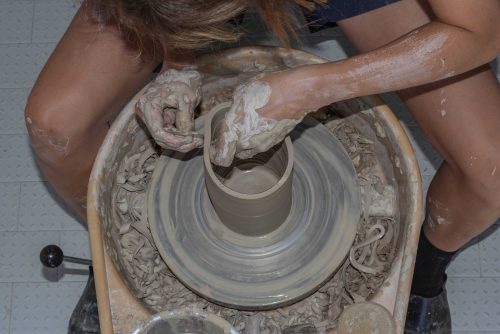
Katharina Keller
MITTERNACHTSLINIE
Project Info
- 💙 Max Ernst Museum
- 💚 Patrick Blümel
- 🖤 Katharina Keller
- 💜 Patrick Blümel
- 💛 Jürgen Vogel for Max Ernst Museum Brühl (LVR)
Share on

Advertisement







Katharina Keller’s installations weave fragments of identity from Siberia and Germany with personal childhood memories. Her works create immersive spaces of association at the thresholds between past, present and future. The exhibition alludes to the meridian at which it is always midnight. It marks the natural temporal boundary between two days and travels with the sun. It separates areas into yesterday and today or today and tomorrow in the process.
The exhibition assembles sculptures and video works, in which Katharina Keller produces multi-layered relationships between places, lifeforms, objects or materials that are defining for her. The artist examines questions of postmirgant identity and the collective and subjective experiences of a post-Soviet society.
A monumental mural shows the photograph of a ship in the Bering Sea, on which her father served as captain. The first memories of the artist are associated with her birthplace in Omsk, the Pacific, the raw climate and the Siberian landscape. Much of this is expressed in the atmospheric black-and-white photo, which Katharina Keller’s father took himself and developed in her childhood home. At the same time, signs of wear on the surface of the photo bear witness to movement and suggest the later migration of the family to Germany.
For the Leonora Carrington Hall, the artist has created a site- specific intervention that initiates a dialogue between urban spaces and the depths of her personal and collective memories. Katharina Keller is interested in materials like aluminium, which are used in the Siberian urban space, for example, as provisional heat insulation for windows. The frames in the exhibition bear drawings and text fragments from her journals. They mark the threshold between the inner and outer world.
The video works shown in the exhibition originated in the course of intensive research travel, which led the artist to Omsk, the place of her birth, to Friedland in Lower Saxony and to the Tolbachik volcano on the peninsula of Kamchatka. She compiles journal-like video fragments to form a kind of collaged mix of landscape images, documentation material, concert impressions, interviews and performance.
Katharina Keller also deals with the complex transcultural interrelations of her own biography in her delicate concrete sculptures. Taking the ornamentation of the wooden architecture of Siberia.
The forms are part of an archive that the artist maintains and continually expands upon. For her installations, she translates individual ornaments into the materiality of striking Soviet brutalism.
Patrick Blümel




